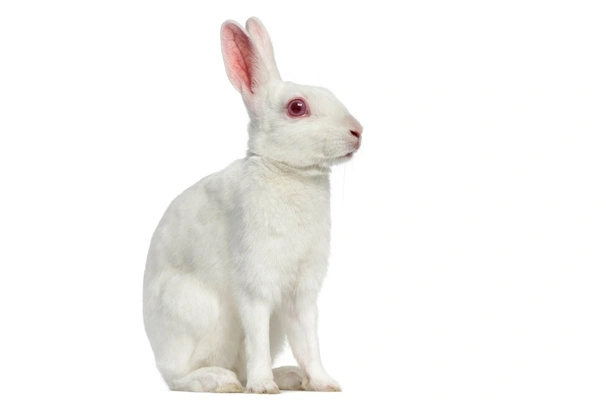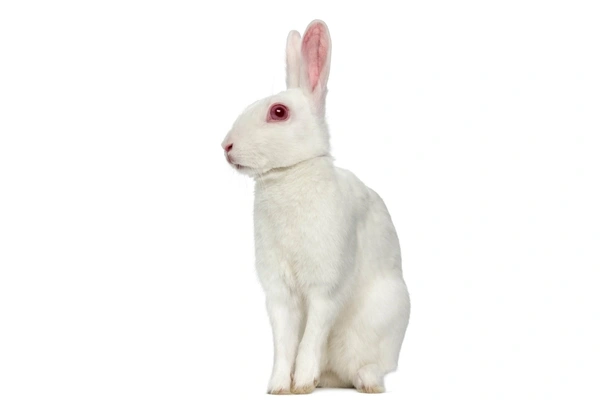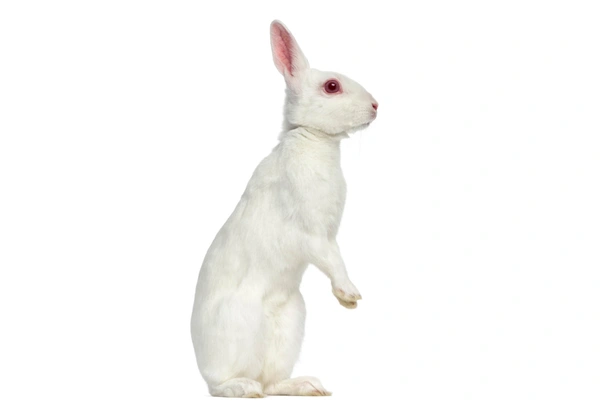Pets
Pets for studWanted petsBreedersAccessories & services
Knowledge hub
Support
Support & safety portalBritannia Petite
Introduction of the Britannia Petite
The Britannia Petite was founded in Great Britain in the 1800s and is known in the UK as the Polish. It’s a dwarf breed that’s renowned for being lively and energetic.
History of the Britannia Petite
The Britannia Petite was developed in Britain in the 19th Century. It’s often referred to in the UK as the ‘Polish’. Despite this reference however, the breed doesn’t have any Polish lines and nor was any part of the breed developed in Eastern Europe. The name actually refers to the gloss of the coat, rather than the country of origin.
The Britannia Petite is descended from a variety of breeds – notably wild rabbits as well as Dutch and Silvers. These first animals were imported from Belgium and were initially called the Belgian Table Rabbit. As the name implies, these early versions of the Britannia Petite were intended for the table and although they were small, they were seen as a great delicacy.
The breed was first recognised in Britain in 1884, when they were only seen in white with red eyes. In 1912 the Britannia Petite was imported into the US, where breeders there worked on improving its ‘snaky’ conformation and create a more rounded ‘cobby’ animal. Breeders in Great Britain however, seemed to prefer a more hare-like rabbit and so worked to preserve the more slender body on this side of the Atlantic.
Later US imports from Britain differed greatly from the new US body type and were therefore considered a new breed – the Britannia Petite.
Appearance of the Britannia Petite
- Main colourways: white, white (red eyes), black otter, black, chestnut agouti and sable marten
- Average weight: 0.7 – 1.2kg
Among the smallest breeds of rabbit, the Britannia Petite weighs little more than a kilogram when fully grown – occasionally considerably less. This is an elegant, graceful animal that holds itself upright. They are incredibly fine-boned and slim, with a very arched, hare-like appearance.
The head is almost triangular in profile with a pointy nose and ears held erect and close together, giving the appearance of constant alertness. The coat is short, smooth and fine.
Temperament of the Britannia Petite
Extremely energetic and lively, despite its size, the Britannia Petite requires plenty of space as it’s almost always on the go. They are incredibly fast for their size and have a very high jump. They greatly appreciate the opportunity to race around.
They are clever and curious and need lots of activities to prevent them from getting bored. Boxes and tubes will provide the perfect opportunity to climb and hide. Frequent physical exercise is crucial in preventing boredom.
The Britannia Petite is not a good choice as a children’s pet as they are not keen on cuddles – preferring to be active. They are also small and delicate and will not withstand rough handling. Because they do dislike too much handling it’s essential they get accustomed to human interaction from an early age. A patient, gentle approach is vital with this breed as any mistakes or harsh treatment will be remembered for a long time. A bad experience when young can leave them suspicious of people and may even make them aggressive.
For the more experienced rabbit owner the Britannia Petite can make a lively, entertaining pet that can be trained to carry out a number of tasks.
Health of the Britannia Petite
Dental care is a vital part of rabbit husbandry as their teeth grow constantly and require a diet designed to keep them worn down. Overgrown molars cause a multitude of problems, including injuries in the mouth that can become infected. The best way to combat dental problems is to provide a diet that includes plenty of good quality hay and lots of green veg such as dandelion leaves, kale and cabbage.
Toys intended to be gnawed can also help keep teeth worn down. If you think your pet may have a dental issue a vet must be called to conduct a thorough examination as well as any treatment that may be necessary.
As well as careful dental management, all rabbits must be vaccinated against the potentially fatal diseases myxomatosis and Viral Haemorrhagic Disease – both of which can be spread by infected animals, bedding or toys. They should also be treated regularly for ticks, worms and fleas.
Carrying too much weight will prevent your pet from grooming thoroughly and if he can’t clean himself then flies might be attracted to soiled areas of fur – particularly in warmer weather when flying insects are abundant. If the flies lay their eggs in the fur the maggots can bury into your rabbit’s skin causing open wounds, discomfort and deep infection. Flystrike can be prevented by managing his diet to avoid weight gain and ensuring his fur and bedding remain clean.
Caring for the Britannia Petite
It’s important that, with a rabbit that is extremely active, he has access to a run or a secure area of garden so he can nibble grass, run around and enjoy the sunshine. Rabbits enjoy sunbathing, but he should have a shaded area where he can get out of heat if it gets too hot.
If your rabbit’s going to live indoors he should be introduced to any other pets under careful supervision and while he’s still young enough not to be startled by larger animals. Although he may get on well with other pets, he must have an area he can go to get away from people, pets and children – a dog crate or indoor cage is perfect for this. He should be offered a litter tray too and because the Britannia Petite is an intelligent animal, he can be trained to use this quite easily. Cables and wires and anything else important should be moved out of the way as his desire to chew will mean he will gnaw on whatever he takes his fancy.
If he’s going to live outdoors in a hutch you should think carefully about getting two animals. In the wild, rabbits live in colonies of many animals and do not like to be alone. The hutch should be water and windproof and a cover should be placed over the front in the harshest weather. Straw and shavings make excellent bedding and make the weekly clean out relatively easy. Faeces should be removed daily and he must have unlimited access to clean drinking water. Tubes, cat toys and logs make welcome additions to his home. The hutch should have a covered nesting area where he can build a cosy bed and go for a snooze or get away from unwanted attention or bad weather.
His diet should be carefully planned to help him stay fit and healthy and should consist of good hay, high-quality rabbit pellets and lots of green leaves and vegetables such as cabbage, dandelions and nettles.
Related adverts
See all
Britannia Petite / Polish Female Rabbit
£35
Litter of 5, unknown breed,£30 for 1
£30


